
Packing your bags the right way
At a glance:
- Azure is one of the five leading Infrastructure-as-a-Services used by enterprises to widen scaling efforts and accelerate digital transformations.
- LeanIX's EA Management Tool provides multi-functional methods to align IT and Business needs to practically evaluate cloud-readiness.
- Migrating to Azure is an opportunity to clear redundant and/or costly applications while fortifying existing technological assets.
If it hasn’t already happened, it is a foregone conclusion that your company will move to the cloud.
And most likely it will choose to go with Microsoft Azure—the public cloud service that led 2016-2017 with 98.2% growth in the Infrastructure-as-a-Service (“IaaS”) market.
Azure is trending upwards for obvious reasons:
- It offers dedicated and competitive services for helping developers of Artificial Intelligence and Machine Learning.
- It offers location-based methods to automate device provisioning—allowing millions of users worldwide to efficiently register and configure their fleets of IoT equipment.
- Its Azure Active Directory, Advanced Threat Analytics, and Authenticator offerings provide superior security + compliance.
- Its unique, open-source Edge computing platform permits flexibility when eliminating bottlenecks in data sourcing and collection.
- Its out-of-the-box disaster recovery solutions keep applications running during planned and unplanned outages.
Unfortunately, in order to unlock these slick features of Azure, an enterprise must first conduct many nimble and calculated movements. The likes of which only LeanIX’s Enterprise Architecture Management Tool can help you perform.
Know your destination
LeanIX is an EAM Tool structured on the logic of collaboration and borderless architecture—the same underlying principles that compel siloed business units worldwide to move to cloud-based working environments in the first place. If the objective of the cloud is to activate a culture of modern security and accessibility, then it only makes sense to use a tool dedicated to transparency and real-time reporting to navigate how to migrate your organization’s most sensitive technological assets.
Look at it this way: Every team, in every department, in every enterprise business unit worldwide has their own reasons for wanting Azure—and each depend on applications with varying degrees of data complexity and functionality. To manage expectations by foreseeing how life with Azure will actually change their occupational futures, EAs must obtain an accurate look at these mechanisms to understand why and how they support business capabilities in order to ship them to the cloud in the right condition.
A modern EAM Tool like LeanIX unites IT- and Business-focused change strategies by letting all users co-operatively gather, store, and evaluate systems information according to practical rubrics. It typically occurs in three phases...
-
Enterprise information is mined via methods like surveys and Technopedia integrations;
-
Feedback is cleansed and imported directly to an interconnected network of individual scorecards known as “Fact Sheets”; and
-
Analysis is performed using a library of out-of-the-box or downloadable peer-designed automated reports.
...all of which to help EAs (and their ever-growing number of stakeholders) systematically document and tidy enterprises before travelling cloudwards.
It is, without a doubt, the Marie Kondo of the EA world.
bring the right Things
Let’s look at the below example of an IT application Fact Sheet entitled “Personnel System” to put it into context:
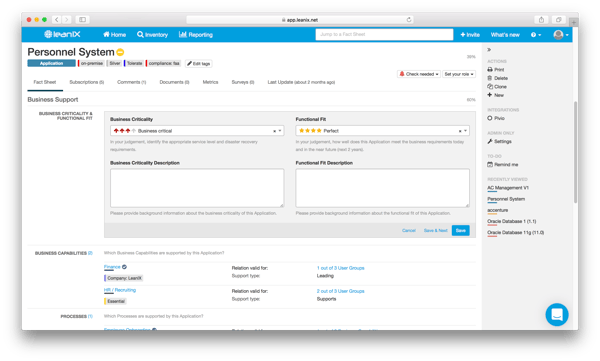
Image 1: "Business Criticality" and "Functional Fit" scoring as seen in a LeanIX Fact Sheet.
Under the “Business Support” category, a Fact Sheet offers dedicated fields to log the value of an application’s “Business Criticality” and “Functional Fit”. These rankings (among many others) directly feed automated reports like the following (the "Application Matrix" Report) to calculate an application’s multifaceted necessity:
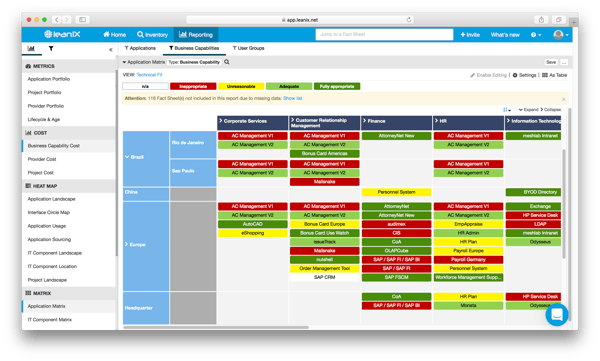
Image 2: An Application Matrix Report showing the Technical Fit of applications essential to an operation's global Business Capabilities.
Views like this allow EAs to prioritize which applications need to be migrated to the cloud and also the corresponding resources and personnel to ensure it is accomplished properly. However, since not every enterprise application deserves a place in the digital new world, an Azure migration is as good a time as any to run a LeanIX performance cost report to see where to jettison enterprise baggage.
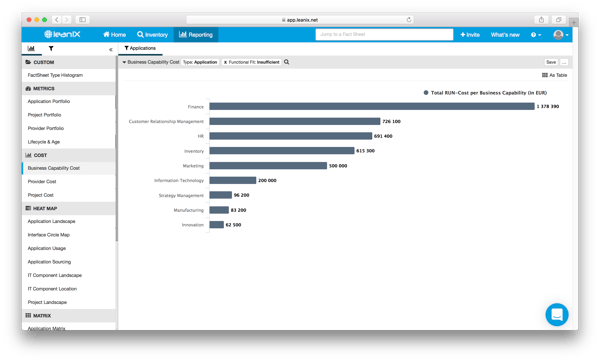
Confirm your reservations
- Will cloud solutions be accepted by the business owner?
- What is the risk appetite of the business in regards to cloud migration?
- What is the business criticality of every targeted application?
- Is it still in the "planning" phase?
- Does the application need a technical review?
- Rather than migrating the application to a cloud infrastructure (IaaS or PaaS), would it make sense to replace it with an SaaS solution?
- Is the application web-based or built with a service-oriented architecture?
- Can it be split into modular services? What is the level of effort required to modularize?
- What are the demand fluctuations for the application? How will moving to the cloud impact demand?
- Are there confidentiality, privacy regulations that prevent a move to the cloud?
- What are the privacy or confidentiality concerns held by the business?
- How involved is the level of data transfer between the application and the end user? Is there high load and lag to consider?
- How resilient must the network infrastructure be?
- Do requirements exist such as network isolation, virtual private networks, elastic addressing, and network segmentation?
- Is there a requirement for high availability and disaster recovery?
- Who is responsible for authentication? Is SSO a requirement?
- Which security controls are in place at the cloud vendor?
- Is continuous monitoring required?
- What are the interconnected dependencies of the migrated applications?
- Is the migrated application a system of record for key data in the master data management scheme?
- Does the application rely on common directories, such as user directories?
Enjoy yourself responsibly
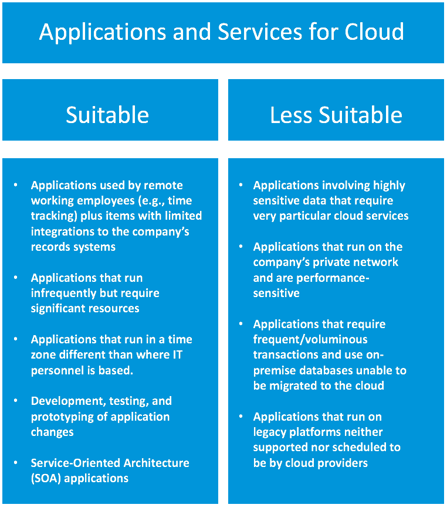
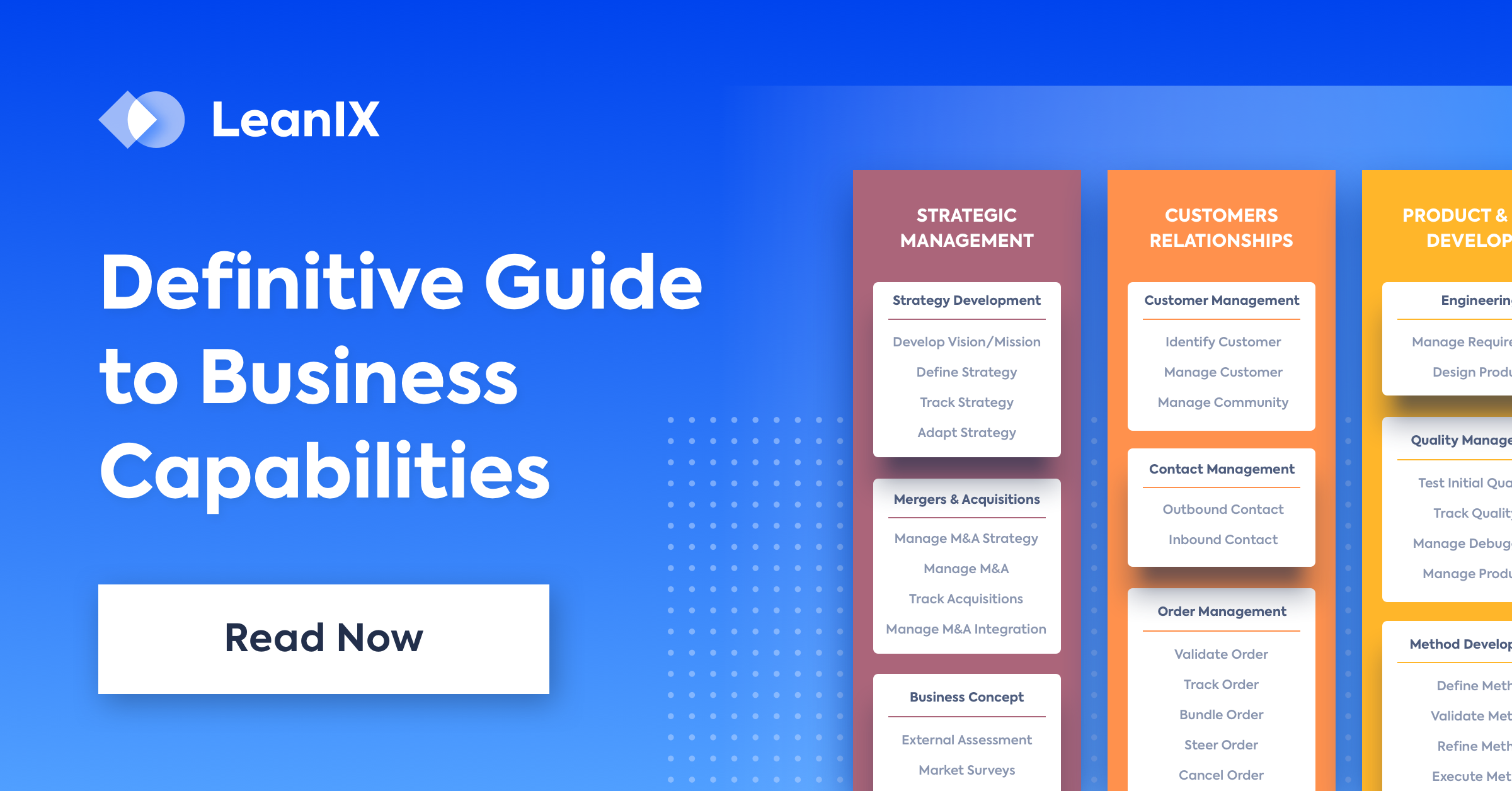
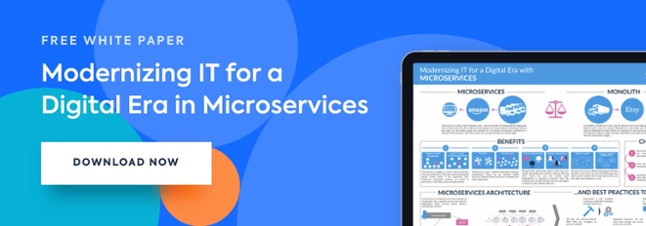

.png?width=140&height=107&name=BTMPlaybook-FI%20(1).png)

